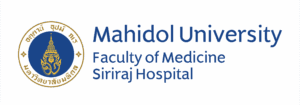About Siriraj Conference
“Siriraj Conference is the place for academic conferences and short training courses which are organised by Faculty of Medicine Siriraj Hospital for all disciplines in the field of medical such as nursing service, public health, alternative medicine, physiotherapy, pharmacology, as well as medical sciences.
Interested persons can register for advance booking. You can plan your trainings to enhance your knowledge and skills to succeed in your further careers.
Please call 02-419-2673, 75 and 78″
www.sirirajconference.com


